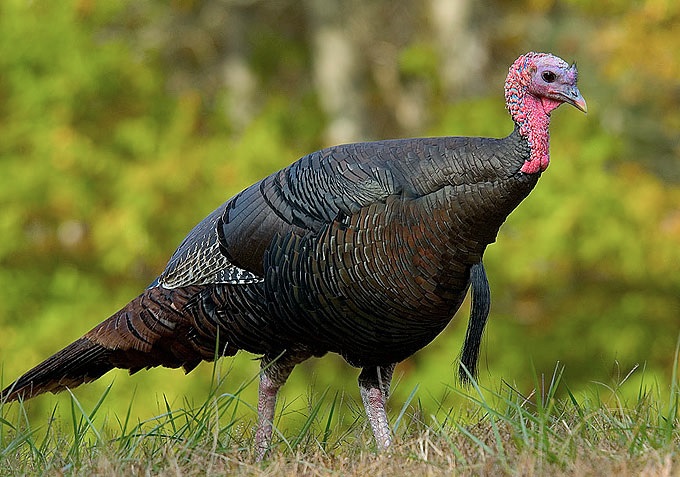Blog

#bioPGH Blog: A Turkey Tale
 A resource of Biophilia: Pittsburgh, #bioPGH is a weekly blog and social media series that aims to encourage both children and adults to reconnect with nature and enjoy what each of our distinctive seasons has to offer.
A resource of Biophilia: Pittsburgh, #bioPGH is a weekly blog and social media series that aims to encourage both children and adults to reconnect with nature and enjoy what each of our distinctive seasons has to offer.
With tomorrow’s big dinner upon us, the bird word of the hour is surely “turkey!” Beyond this large bird’s historical appearance in the three-day Thanksgiving feast of 1621, our wild turkey is notable for another reason: by the early twentieth century, wild turkeys were nearly extinct in North America. The recovery story of these birds is considered a great conservation success but perhaps is a bit less well-known than its legacy as a Thanksgiving staple. Let’s explore, shall we?

Like many other game species in North America, turkeys faced severe population decline as a result of overhunting and habitat loss. In the 1920’s-30’s, the US turkey population hit its lowest point, with roughly only 30,000 individuals across the country, and the bird was extirpated (locally extinct) from 18 states. The Pennsylvania Game Commission estimates that during this time, approximately 3000 birds lived in portions of Pennsylvania, protected by rugged, inaccessible terrain in a few parts of the state.
To remedy this decline, some of the early management strategies included unsuccessful attempts to release farm-raised turkeys into the wild. Though multiple states released numerous birds from their respective game farms, follow-up surveys indicated the reintroduced farm birds didn’t establish any significant new populations. Instead, populations of turkey largely rebounded as managed habitat became available to them. In addition, many states conducted a number of conservation translocations—wild birds of stable populations were successfully moved back into parts of their range where they had disappeared. By the 1970’s, the US was again home to over 1.5 million turkeys.
Today, the US is home to roughly seven million wild turkeys. Here in Pennsylvania, the Game Commission manages their population and their habitat, plus regulates hunting to ensure that we don’t overexploit these birds again. Considering how often we Pittsburghers might spot turkeys around the city, it seems strange to think that at one point, we were so close to losing these birds from the wild; but it’s an excellent example of the value of habitat restoration and species protection. It also shows that even though we humans are capable of creating messes, we are also entirely capable of working together for solutions that benefit everyone.
Happy Thanksgiving!
Connecting to the Outdoors Tip: The next time you visit a county or city park, keep your eyes open for our local subspecies, the Eastern wild turkey. These birds forage on a variety of plant materials, including seeds, nuts, acorns, some greens, and insects; and—as many of us have noted around the city—they have adapted to a variety of habitats including a gradient of open fields to forest. Though popular lore suggests turkeys are flightless, they actually can fly over a mile if needed.
Continue the Conservation: Share your nature discoveries with our community by posting to Twitter and Instagram with hashtag #bioPGH, and R.S.V.P. to attend our next Biophilia: Pittsburgh meeting.
Nature Conservancy—Wild Turkey Restoration: The Greatest Conservation Success Story?
PA Game Commission: Pennsylvania Wild Turkey
National Wild Turkey Federation—Wild Turkey Population History and Overview
Smithsonian Magazine—What Was on the Menu at the First Thanksgiving?
Photo Credits: Metropolitan Museum of Art CC-0, Wikimedia User Dimus CC-0 and dcrjsr CC-BY-3.0

